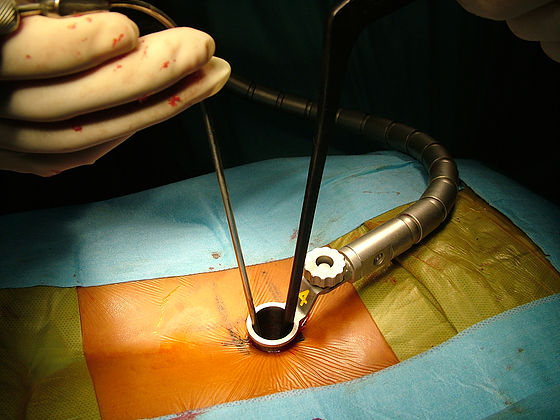
MIS-Posterior Oblique Lateral Lumbar Interbody Fusion
MIS-OLLIF has advanced to the use of percutaneous systems, specific spinal instrumentation, tiny cameras (endoscopic), and magnifying instruments that make minimally invasive spine surgery possible. The benefits of minimally invasive spine surgery include small skin incisions, muscle fiber dilatation along the natural plane using sequential dilators, reduced bone removal, and blood loss. There is significant reduction in post-op pain and quicker recovery time. Often, this can be done on an outpatient basis.
What is involved in MIS-OLLIF surgery:
- The targeted spine and disc are precisely mapped using bi-planar fluoroscopes.
- The target disc is approached using sequential dilators to about 26 mm. Intra-operative real-time neuro-monitoring is used to ensure that the spinal cord, nerves, and neural structures are outside the surgical field.
- The arthritic joint and bone spur that compress the nerves are removed.
- The damaged disc is evacuated under direct visualization with high magnification through the small tube.
- A specialized spinal implant and bone graft are inserted into the disc space to restore the disc height.
- Percutaneous pedicle screws and rods are inserted through small stab incisions using the Microspine approach to hold the spine together and provide stability during the healing process.
- Incisions are closed using dissolvable sutures.
- The patient will be instructed to wear a back brace to support recovery and encourage proper healing.
What to expect after the procedure?
While this is an outpatient surgery in most cases, we recommend resting for a prescribed period post-operatively and gradually increasing activity levels with instruction and supervision from your providers. You will also be advised to wear a back brace for added support during the healing process.
